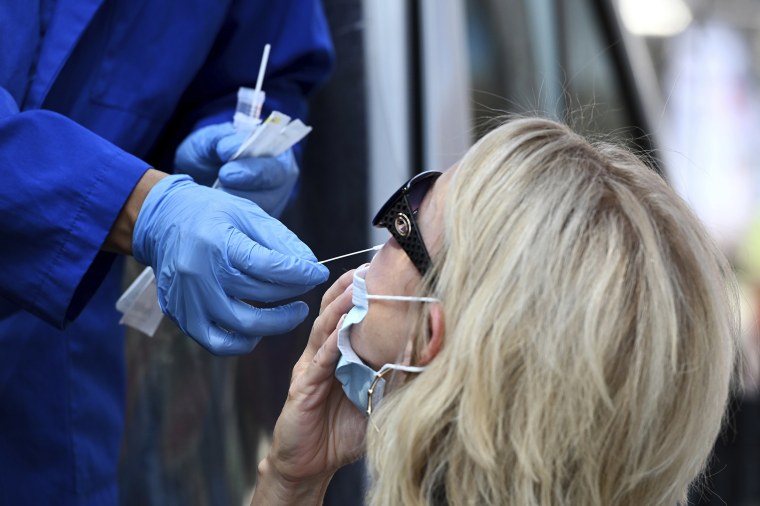New Omicron Variant Arcturus
"If you've been infected before, it's able to escape some of those antibodies and immune cells that you've developed.""But it's not like something we saw with Omicron [Alpha, then Delta, then Omicron].""[Omicron reinfected everyone all at once], producing this really big wave.""I think that becomes less and less likely as there is more immunity in the population."Dr. Jesse Shapiro, genomic evolutionary biologist, McGill University
 |
| The new Arcturus Omicron subvariant of Covid-19, which is spreading in Australia, has been categorized as low risk by the World Health Organization. Photograph: Jules Ingall/Getty Images |
In India, the new Omicron strain appears to have been associated with conjunctivitis (pink eye), a condition commonly causing redness and inflammation of the conjunctiva, the thin layer of tissue that covers the eye. And mostly affecting children. Itchiness and watery eyes are among the symptoms, including a sticky coating on the eyelashes if an allergy is involved.
"Arcturus" is now the variant of interest that has been the cause of a surge of COVID-19 in India. Its infection has a tendency to feature fevers and to cause itchy, watery eyes, so that it can easily be confused with seasonal allergies. It is not otherwise "particularly wild or shocking", according to Dr. Shapiro of McGill University.
Its emergence has been recognized as a new, likely more infectious COVID agent, even as the World Health Organization formally placed COVID-19's designation as a world health emergency as an issue of the past. SARS-CoV-2-induced deaths, hospitalizations and ICU admissions have all been in steep decline for over a year, in an atmosphere of global high population-level immunity resulting from vaccinations and infections as well as a combination of both.
"With great hope, I declare COVID-19 over as a global health emergency", announced WHO director-general Dr. Tedros Adhanom Ghebreyesus, on Friday. "In practical terms, the decision changes little", noted The New York Times in the recognition that most countries have long since removed public health restrictions.
Health experts, however, agree that while the world can sigh with relief that normalcy can return, they remind us all that though the dangers associated with the pandemic's wild spread have been reduced, the global spread of this virus is not over and likely never will be, since SARS-CoV-2 is still evolving. Formally known as XBB.1.16, the Arcturus variant, an Omicron descendant, is becoming ascendant in its rapid spread in Ontario and elsewhere throughout Canada.
This variant represents a recombinant of two different BA.2 strains. "It is an Omicron", with all the same major Omicron mutations, along with several more thrown in of interest, thought to aid it in evading immunity, explained Dr. Shapiro. There is research that suggests it could be more infectious and marginally more immune-evasive than previous virus iterations.
"The upward trend of cases warrants public health experts to remind the community on protective measures against the spread of disease.""It is concerning that there are so many Omicron subvariants circulating in our communities, but it [should] be part of our daily routine to wear masks and practice safe distancing when one of the subvariants pick up steam."Bernadette Boden-Albala, MPH, director, founding dean, University of California Irvine’s Program in Public Health"The global risk assessment for XBB.1.16 is low as compared to XBB.1.5 and the other currently circulating variants. No changes in severity have been reported in countries where XBB.1.16 are reported to be circulating.""In India and Indonesia, there has been a slight increase in [hospital] bed occupancy numbers. However, the levels are much lower than seen in previous variant waves."World Health Organization
 |
Labels: Arcturis, Canada, Highly Infectious, India, Low Impact, Omicron sub-variant

0 Comments:
Post a Comment
<< Home